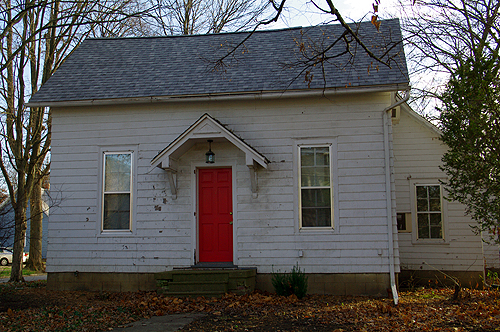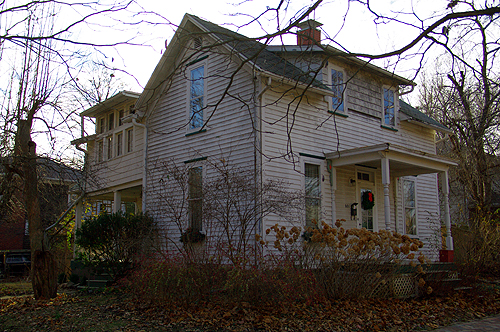Hall and Parlor (1850-1890)
 |  |
The Hall and Parlor floor plan was relatively common in early colonial American houses, particularly during the latter half of the 17th and the early part of the 18th Centuries. Simple side-gabled, Hall and Parlor houses are two rooms wide and one room deep, with the central front door opening into a small vestibule or porch. The porch has a stairway and two interior doors leading to the hall and the parlor, respectively. The hall typically served as the center of family activity, while the parlor usually housed the best furniture and the main bed. The separating wall contained a massive chimney that would serve both rooms. The stairway led to a loft, which was retrofitted as the family prospered, with windows in the gable ends or in dormers in order to improve the quality of the living space.
| |
The Hall and Parlor style is a traditional British folk form that dominated pre-railroad folk housing over much of the southeastern United States. Houses were built in heavy timber framing in the Tidewater South and hewn log walls in the vast Midland region. Post-expansion of the railway network, light framed walls became popular. Principle variations included differing chimney placements, changes in porch roof sizes and shapes, and variable designs of rearward extensions for enlarging the house. | |
